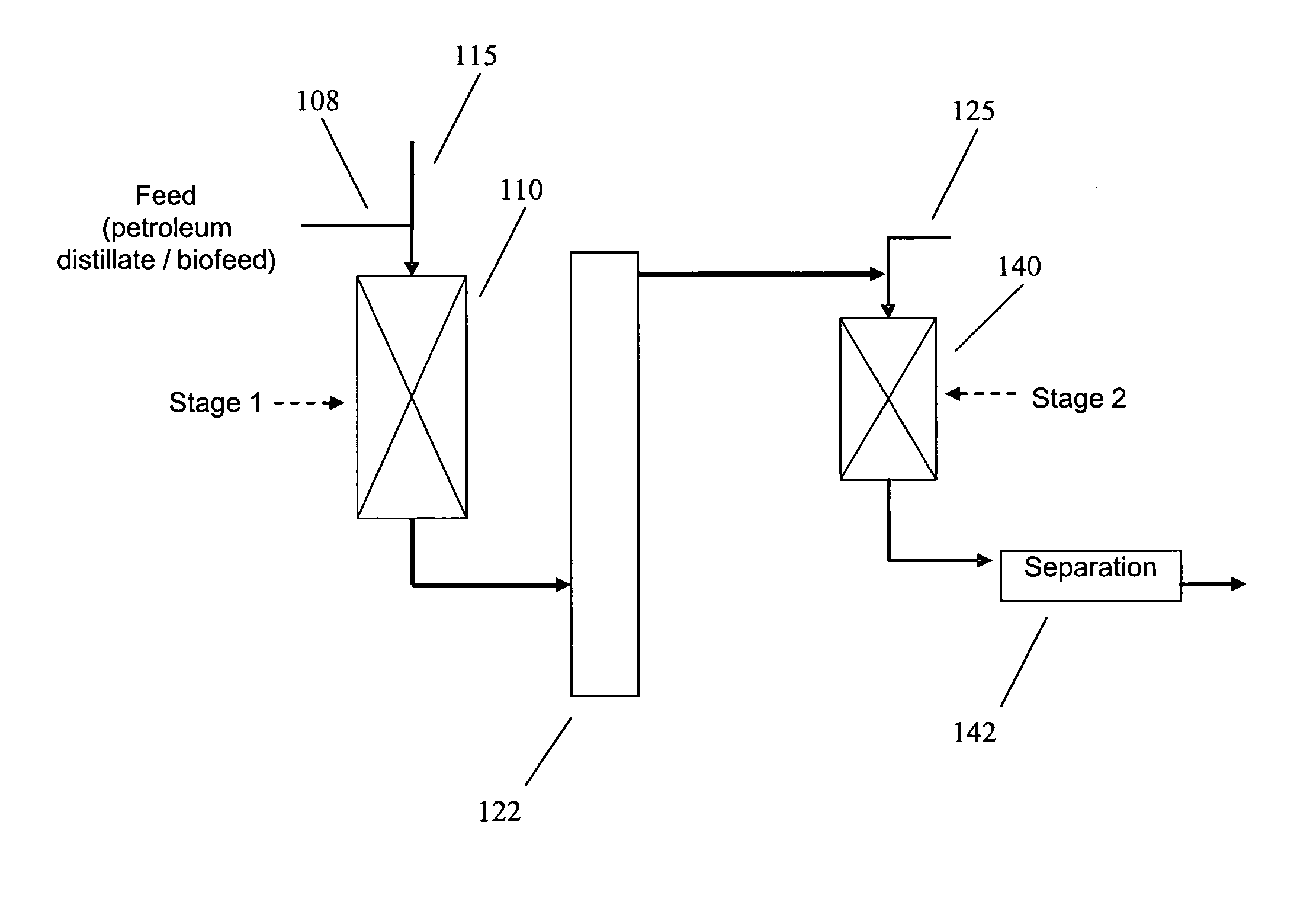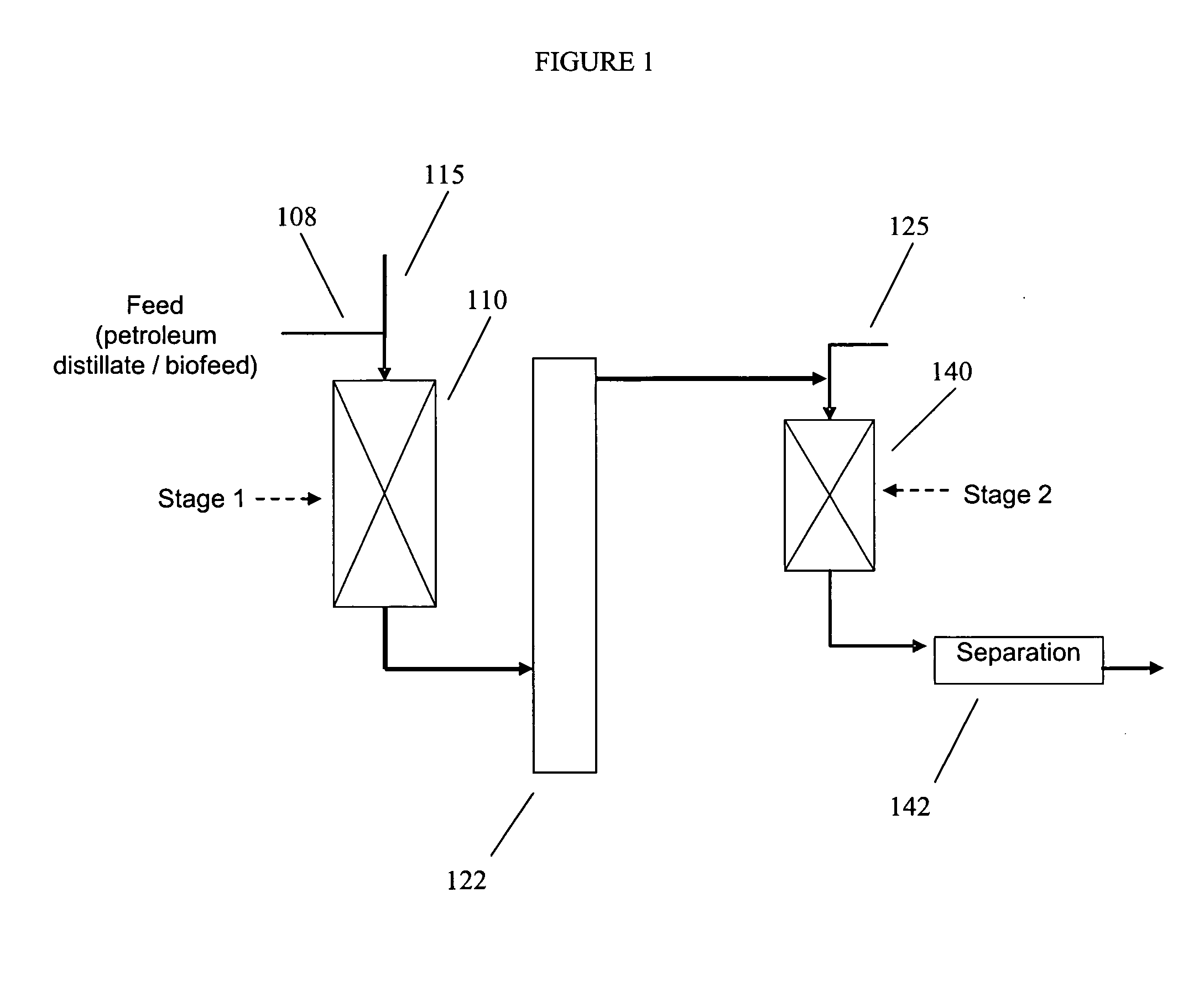Co-processing of diesel biofeed and heavy oil
a biofeed and diesel technology, applied in the field of co-hydrotreating process, can solve the problems of difficulty in modifying and/or replacing low pressure units to allow for higher processing pressure, and affecting so as to improve the cold flow properties of diesel boiling range products
- Summary
- Abstract
- Description
- Claims
- Application Information
AI Technical Summary
Benefits of technology
Problems solved by technology
Method used
Image
Examples
Embodiment Construction
[0011]This invention provides processes for producing diesel fuels that include up to 50% by weight of a biocomponent feedstock and also have sulfur levels of 10 ppm or less. In an embodiment, the desired goals of the invention are achieved by co-processing a biocomponent feedstock with a mineral feedstock in a reaction system with multiple hydroprocessing stages. In the first hydroprocessing stage, a biocomponent feedstock is co-processed with a mineral feedstock in a high severity hydrotreatment reactor. The biocompoment feedstock can be any vegetable (including plant), animal, fish, or algae based fat or oil that would typically be considered for use as a source for biodiesel. The mineral feedstock will have a minimum initial boiling point of at least 650° F. Alternatively, the mineral feedstock can have a T5 boiling point of at least 665° F. An example of a hydrotreatment reactor for treatment of a feedstock with an initial boiling point of at least 650° F. is a hydrotreatment r...
PUM
 Login to View More
Login to View More Abstract
Description
Claims
Application Information
 Login to View More
Login to View More - R&D
- Intellectual Property
- Life Sciences
- Materials
- Tech Scout
- Unparalleled Data Quality
- Higher Quality Content
- 60% Fewer Hallucinations
Browse by: Latest US Patents, China's latest patents, Technical Efficacy Thesaurus, Application Domain, Technology Topic, Popular Technical Reports.
© 2025 PatSnap. All rights reserved.Legal|Privacy policy|Modern Slavery Act Transparency Statement|Sitemap|About US| Contact US: help@patsnap.com


